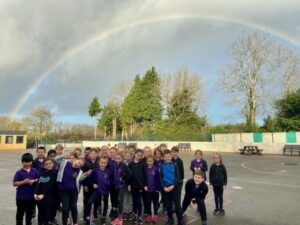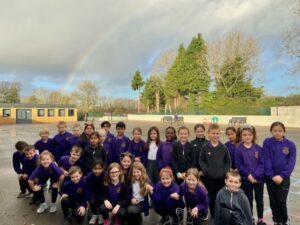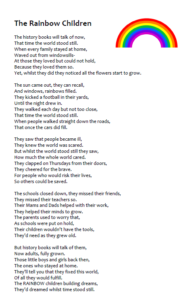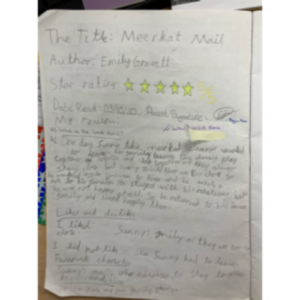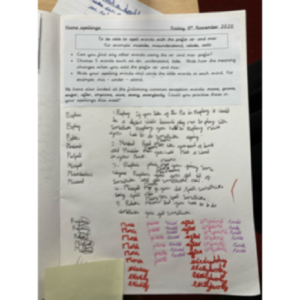This weeks learning
Hi Happy Hippos and Lovely Lions,
Below are the links to your learning for the next three days if you are struggling to access Microsoft teams. Please continue to try and log on to teams though, from tomorrow we will be on teams and able to talk to you about your learning. If you can not remember your log in please contact the school.
Merry Christmas
Year 3 Christmas homework.
What a strange year it has been. You have all worked so hard this term and we are very proud of every single one of you.
During the Christmas holidays, your teachers would like you to:
- Spend as much time with the people you care about (even if that is via a phone, FaceTime or zoom!)
- Do the things that you enjoy.
- Watch your favourite programme or film.
- Make somebody laugh or smile.
- Do something nice for somebody else (without being asked!)
- Play
- Rest
Then, come back to school in 2021, ready to learn!
Merry Christmas and we can’t wait to see you all again in a couple of weeks.
Mrs. Pike, Mrs. Stewart and Miss. Shaw
P.S Santa says there’s no better time to learn to tell the time whilst spending time with your family!
Friday 11th December 2020
Wow what a week we have had in school!
British Sign Language song: Following on from our sign language day last week, which was part of our stewardship award, we have performed and recorded the children signing 2 Christmas songs- one from each class. Watching these really bought a tear to the eye of your teachers as they were truly magical and we can not wait for your families to see these soon!
Nativity: We had some children act out a scene from the nativity on the stage! We were all so impressed with the performance so watch out for this video coming out soon to share with you all.
Carol Singing: We have also been busy practising our Carol. This week we finally got to perform it in the courtyard at school. Again this will be shared soon… not much longer to wait.
Drama workshop: We were also treated to a drama workshop where we had to help a fairy find his fairy tale book! The children absolutely loved this!







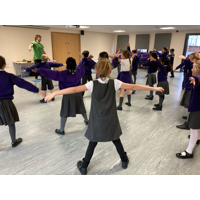

Christmas jumper day: It was also Christmas jumper day in school. Thank you to all the children for wearing your jumpers and donating some money towards charity. If you didn’t manage to bring your money today, it’s not too late to pop it in on Monday.
Reading Challenge Winners: Lots of children entered the reading passport competition this Autumn Term but we think next time we could definitely have lots more children joining in. The 4 winners will be treated to a movie afternoon including popcorn next week. And all those who entered will also get some extra playtime! Well done!!
Sumdog Christmas Challenge: This is still running so make sure you get involved and try to complete the Christmas challenge.
As well as all this we have also be covering our full curriculum. Below is an example of some of the Maths problems we have been given to solving involving measure. In English, we have written our diary entries from Little Blue Penguin. We are so proud of how hard everyone has worked this week with so much going on!
Next week we have our Christmas dinner on Tuesday 15th December. We also have an inset day on Friday 18th December and a few little things to look forward to in class too!
Congratulations to our Showstopper children and our Golden Key winners and to all the children who have received headteacher awards over the past week!
A busy but hugely successful week! We can’t wait to share everything we have been doing with you soon! Phew now I’m tired! I hope you will all join us in having a restful and safe weekend!
Team Three
Friday 4th December 2020
STEM day in Year 3: the boat challenge!
The children were set the challenge of designing a model boat which would be able to float and hold the greatest weight. The children were given a selection of junk modelling materials to build their boat with! They had the best day and we were all so impressed with how they worked together and collaborated to get a result. Here are some pictures ….more to follow.
As well as STEM day, the children also had a day learning about British Sign Language. We were so impressed with how the children responded to all of the activities throughout the day and we have been practising something very special to share with you all soon. Photos to follow shortly.
Spelling homework for this week is looking at homophone – for example their/there and they’re. For vocabulary home learning we are looking for different synonyms for confused. Finally our creative home learning tasks have been coming in over the last few weeks. Please bring anything else in over the next week or so, so we can display these for everyone to see.
Well done to all of the showstoppers, golden key winners and children’s go received the head teachers award! You deserve it!
Keep safe everyone.
Team 3
Friday 27th November 2020
This week we have had an exciting experience getting to grips with the new virtual parents evenings. We have very much enjoyed getting the chance to speak to everyone so far and sharing how your children have settled back into school and into their learning. We look forward to meeting more parents next week.
In our English lessons this week, we started to explore our new text – blue penguin. The children have thoroughly enjoyed exploring the main character in this text so far and how difficult life can feel when you are left out for being different. Over the next couple of weeks we will be writing a diary as if we are the blue penguin and exploring thoughts and feeling further.
- During our Maths lessons we have continued to look at fractions and how we can find a fraction of an amount using our times tables. Don’t forget to keep practising them. We ended the week looking at missing box problems which were very challenging so we were impressed with the children’s resilience when trying to solve these.
For spelling home learning we have been exploring the -gue and -que word endings. Can you find some words with these endings and practise spelling them. The phonics group have been looking at the ‘ph’ sound.
On Monday 30th November we will be having a day dedicated to learning some British sign language. The children have been given the challenge of finding out some signs over the weekend to impress and surprise their teachers with on Monday. Come back next week to see some pictures. We also have a STEM day on Friday 4th December – again we hope to have lots of photos to share next week.
Thank you to all the children who bought in a reading book review this week and to all the children who regularly bring in their home spelling to share. We really do like to see what you have been doing at home. Don’t forget to send in any creative home learning to display.
Congratulations to our showstopper writers, golden key winners and this week we have the mathemagician award winners also!
Take care and stay safe!
Mrs Stewart, Miss Shaw and Mrs Pike.
Friday 20th November 2020
This week was anti bullying week. We kicked off the week by wearing odd socks into school, followed by classroom discussionS and activities about anti -bullying. We were impressed with the children’s responses!
In Maths this week, we have been looking at fractions of an amount linked to our farming topic. For example, would you rather have 1/4 of 20 strawberries or 1/5 of 25 strawberries? We will be continuing this next week.
In English, we wrote our postcards to persuade someone to come and visit Sunny ‘s home (from Meerkat Mail). We enjoyed publishing our work and the teachers will be looking to see who is ready to receive their pen licence!
Thank you to all the children who have started researching the different food types at home. In Science, we started looking at what the different food groups do for our body. Over the next few weeks we will be looking at the human skeleton. If anyone has an old x-ray that the children could look at, please get in contact as we’d love to hear from you.
Home Learning: Our spelling lessons have focus on the prefixes: anti, auto and super. Have a go at some of the activities sent home. The Phonics focus group have looked at the Phase 5 sound ‘ir’. Next week we will be starting our new book in English which is about a lonely penguin. The vocabulary home learning contains different synonyms for lonely. Could you explore these words with the children? We have received some creative home learning already which are shown below:


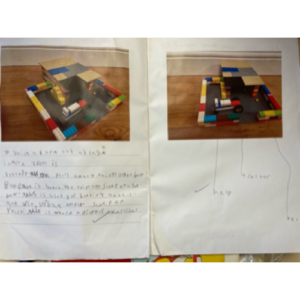
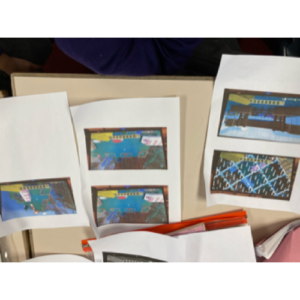
Remember to bring them in so we can display them.
The children took home an envelope containing their parents evening targets which we will be discussing with you further during our parents evening appointments.
Finally, congratulations to our showstopper writers, golden key winners and perfect presentation children! Very well deserved!
Have a good weekend and stay safe everyone.
Mrs Stewart, Miss Shaw and Mrs Pike.
9th November 2020
This week we have been remembering all the people who have died in the wars and the people who are still suffering around the world today. During collective worship, we reflected on what we are grateful for and prayed for those who are not as fortunate as ourselves. During our RE lesson, we created prayers for remembrance which we displayed proudly in our classroom area.
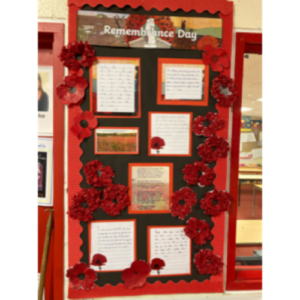
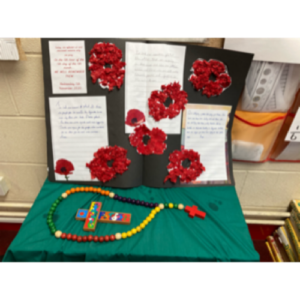
During our Maths lessons this week, we have been looking at adding fractions with the same denominator. We have used number lines, part part wholes and the bar model to show these.
Our literacy lessons have focussed on the three sentences types: statement, question and exclamation. We have been sorting sentences by these categories and then creating our own to use in our persuasive writing based on the text ‘meerkat mail.’
Home learning: for spellings we have been looking at the long a sound (eigh, ey, ei) and the phonics group have been learning the ‘wh’ sound. Thank you to all the children who completed the reading review for this week. Here are a few good examples of home learning this week.
Our new topic this term is all about farming and healthy eating. The children have some creative home learning ideas to try to complete between now and the end of term. The expectation is that they try one of the activities and bring it in to share. We’d like to create a display of the children’s work so please send them in whenever they are completed. Finally, just a reminded for completing the reading passport as well as the must read texts.
Congratulations to all of our showstopper writers, perfect presentation pupils and golden key winners.
Have a restful and safe weekend.
Mrs Stewart, Miss Shaw, Mrs Pike
Friday 6th November 2020
Welcome back after what we hope was a restful half term break.
Today in school was our Deep Learning History Day which was focused on the Gunpowder Plot. We started the day by familiarising ourselves with the story and created a story map of events. We moved onto a conscience alley task were we discussed possible punishments suitable for Guy Fawkes. Some children became King James and walked down our conscience alley. The rest of the class gave their possible punishment ideas to the king and at the end he decided which punishment was most suitable. Finally, we then debated the question- is it ok to break the law if you are standing up for your beliefs?
In Maths, we have started a unit on Fractions. We looked at the key vocabulary used in the unit particularly: equal parts, denominator, numerator, whole, half, third, quarters, fifths. We then represented these fractions in different ways by naming them, drawing them and writing them. (1/2, half, and then a visual representation of half). Towards the end of the week we solved problems using these.
In writing, we started a new unit using the book ‘meerkat mail.’ We had great excitement when we received a postcard from the book – ask your children about this! We have been building on our usage of persuasive language following our recent vocabulary home learning before half term.
Home learning: Please be sure to complete your spelling and vocabulary tasks for this week. We also would like to see some more book reviews next Friday. We have a ‘Wow work display’ and already some children have had their work photocopied and displayed. Some children are making good progress at reading the ‘must reads’ for this year. Again, progress is being tracked in class so if your child has completed a book, please do make sure they let us know as and when. Finally, if you have completed your reading passport already, we will take them in and display these in the classroom.
Coming up this half term: Our topic will be farming: Field to fork. We will be exploring how farming has changed over time, why is it important, and where our food comes from. We will also be looking at diet in our Science lessons and the importance of a good, balanced and healthy diet. We will be continuing our unit on Prayers, Saints and Feasts in RE. Our Guided reading is based on a text called ‘Farm boy’ by Michael Morpurgo.
Congratulations to our showstoppers, Golden key winners and perfect presentation children.
Have a lovely weekend and enjoy any fireworks that you may see from your window!
Team Three
Friday 23rd October 2020
This week in Maths, we have been solving problems with multiplication linked to the pumpkin patch. Farmer Joe told them there were 4 rows of pumpkins, less than 30 in total but he couldn’t work out how many could be in each row. Luckily the children were on hand to help out. We then thought about ‘what if there were 20 pumpkins but some rows were orange and some rows were white – how many of each could there be?’ Have a look at an example of our work!
We have been busy writing our instructions for washing a sabre tooth tiger (yikes!) We thought carefully about some of the challenges that we might have faced while washing the prehistoric beast. We were all impressed with how creative the children were during the writing process and by the presentation of their final published pieces.
During our PPA Art lessons we have been looking at henna and creating hand and foot artwork in that style.
Home learning: Spellings for this week have focused on the ‘u’ sound spelt with a ‘o’ such as love, mother, another. Our phonics group have looked at u_e. Try and use the vocabulary words during conversations at home over half term to ‘persuade’. We will be writing some persuasive letters after half term using this language. Don’t forget to log in to sum-dog and TT rockstars. We have had some reading passports coming in so keep reading and when you have finished, bring them in to Be displayed. Finally, thank you to the children who bought in the reviews in their home reading journal. We will be looking at these again on Friday 13th November.
Congratulations to our showstopper writers, golden key winners and our perfect presentation pupils.
Thank you for all of your support with the home learning. Have a restful half term break.
